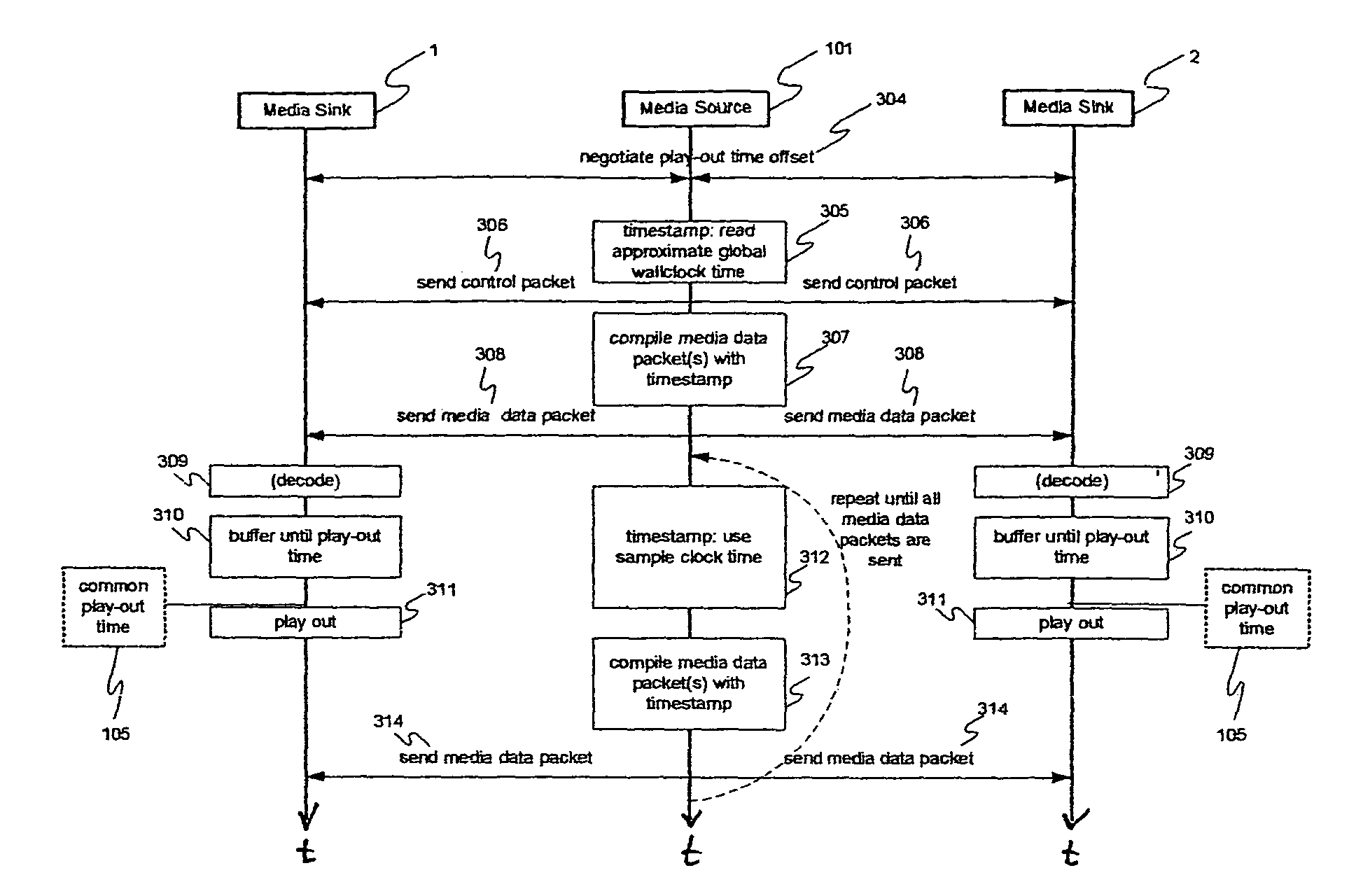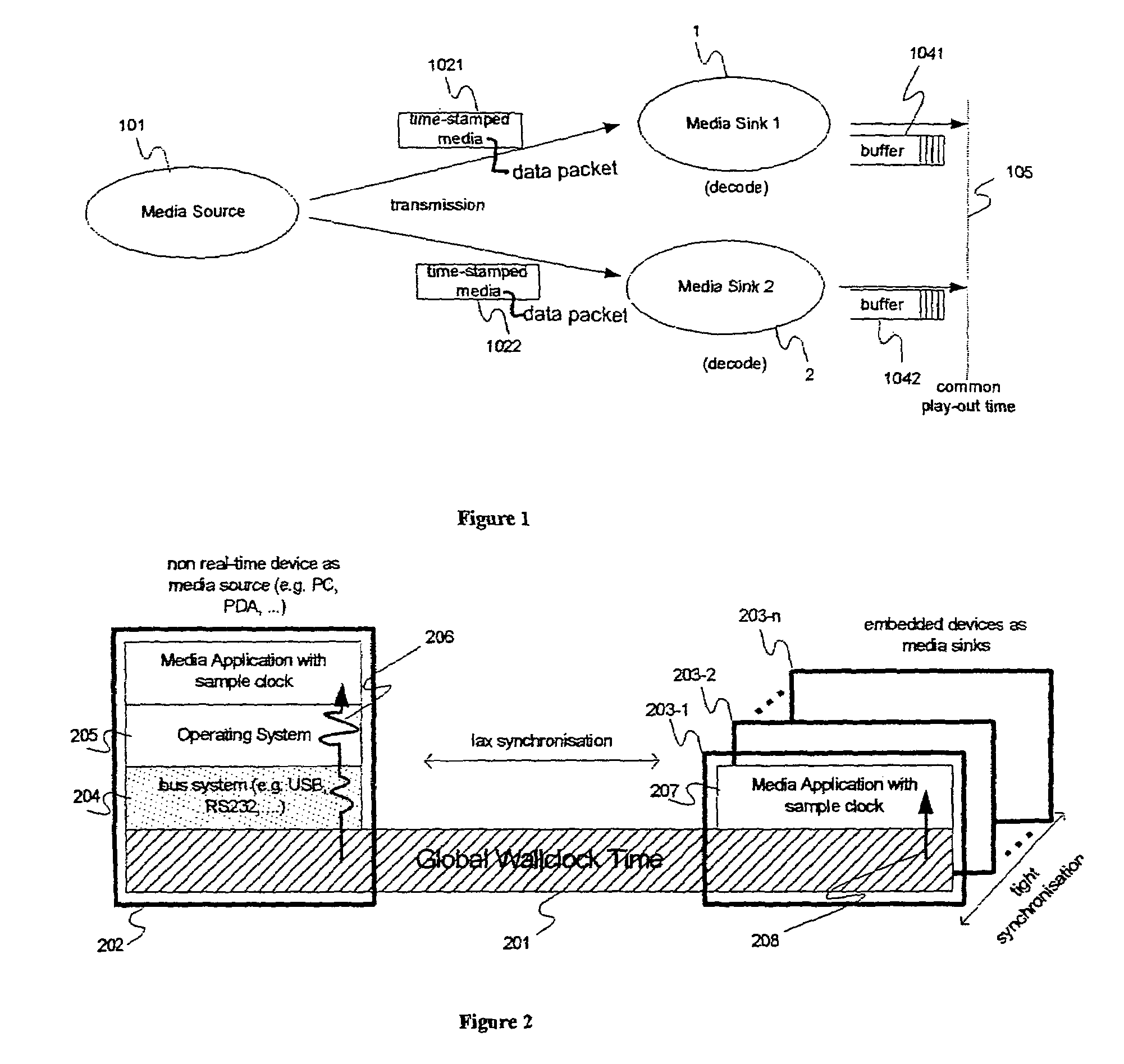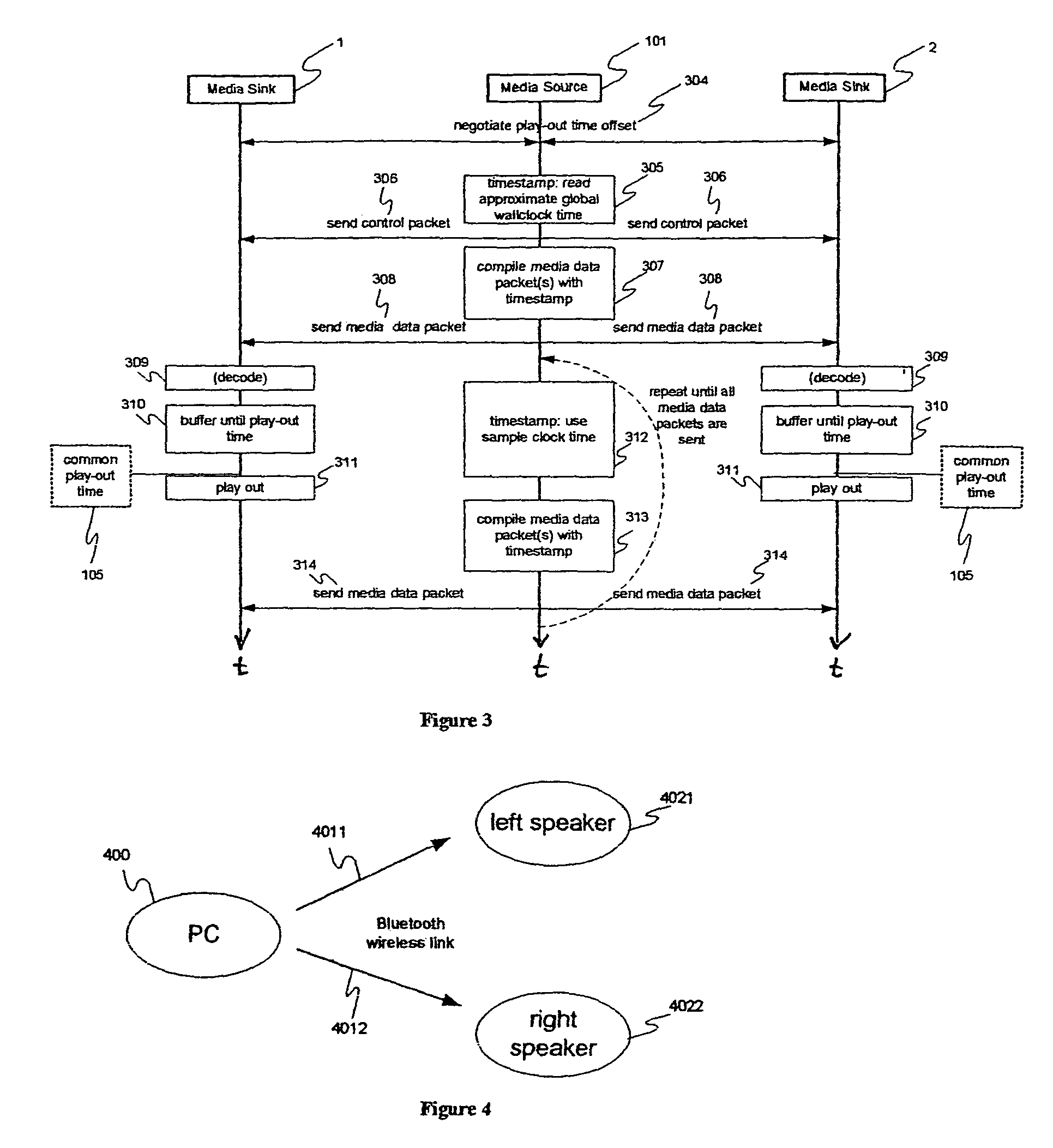Synchronous play-out of media data packets
a media data packet and synchronization technology, applied in the field of media sources, media sinks and media processing systems, can solve the problems of unreliable clock information in most non-real-time source devices, media data packets may not be well synchronized in different media sinks, and above mentioned hearing distortions, so as to avoid hearing distortions
- Summary
- Abstract
- Description
- Claims
- Application Information
AI Technical Summary
Benefits of technology
Problems solved by technology
Method used
Image
Examples
Embodiment Construction
[0048]FIG. 1 shows the basic scenario of a media distribution session with two synchronized media sinks, i.e. a first media sink 1 and a second media sink 2. The media source 101 transmits a first timestamped media data packet 1021 to the first media sink 1 and a second timestamped media data packet 1022 to the second media sink 2. The timestamp of a media data packet indicates the time the media data packet was generated by the source. The first media sink 1 and the second media sink 2 decode the media data packets in case of encoded data. The data is then stored in respective buffers, i.e. a first buffer 1041 of the first media sink 1 and a second buffer 1042 of the second media sink 2 until the common play-out time 105 for the respective packet is reached. This common play-out time 105 is determined by the media sinks for each packet by adding a once determined play-out time offset to the time indicated by the timestamp of a media data packet. If the common play-out time 105 for ...
PUM
 Login to View More
Login to View More Abstract
Description
Claims
Application Information
 Login to View More
Login to View More - R&D
- Intellectual Property
- Life Sciences
- Materials
- Tech Scout
- Unparalleled Data Quality
- Higher Quality Content
- 60% Fewer Hallucinations
Browse by: Latest US Patents, China's latest patents, Technical Efficacy Thesaurus, Application Domain, Technology Topic, Popular Technical Reports.
© 2025 PatSnap. All rights reserved.Legal|Privacy policy|Modern Slavery Act Transparency Statement|Sitemap|About US| Contact US: help@patsnap.com



